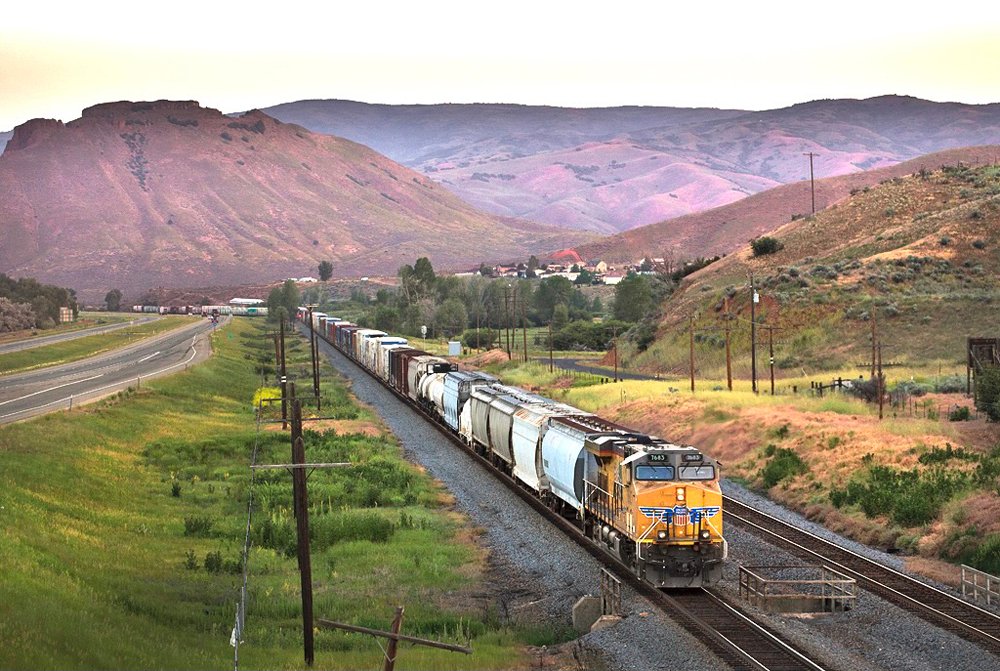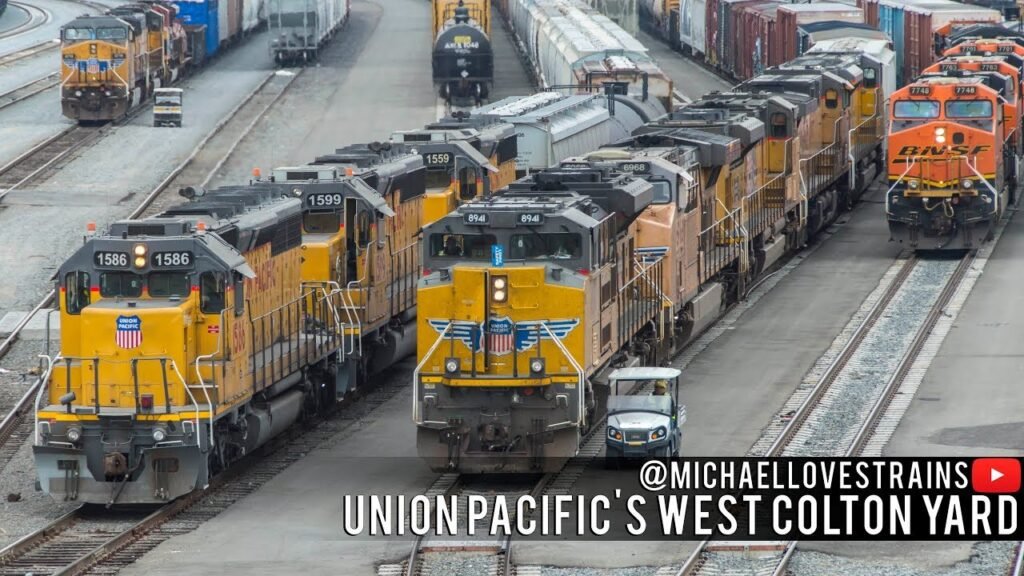How to Identify Different Types of Coil Cars in Rolling Stock 2024
How to Identify Different Types of Coil Cars in Rolling Stock
Table of Contents
How to Identify Different Types of Coil Cars in Rolling Stock
Coil cars are a specific form of freight rail vehicle designed to transport coiled materials, normally steel or aluminum coils. These motors are a vital part of the rolling inventory utilized in industries together with creation, automobile, and manufacturing. Coil automobiles are constructed to securely and effectively bring heavy, cylindrical hundreds that need particular dealing with because of their shape and weight.
In this newsletter, we can speak about the fantastic forms of coil cars, a manner to apprehend them, and what makes every kind particular. Whether you’re new to rail delivery or an enterprise professional seeking to boom your information, this manual will offer the information you need to differentiate amongst numerous coil motors in rolling stock.
1. What Is a Coil Car?
A coil car is a form of railcar mainly designed to transport coils of metal, normally metal, aluminum, or tremendous rolled materials. The cylindrical form of the coils requires precise dealing with and securement at the end of shipping to prevent them from transferring and inflicting damage. Coil motors are constructed with troughs, cradles, or precise securing structures to keep the coils in the vicinity, ensuring they will be transported correctly.
These cars are vital in industries that depend on large quantities of metal coils, together with the automobile employer, production, and manufacturing of family domestic devices. Understanding the extraordinary kinds of coil vehicles can assist make certain the right railcars are used for unique transportation wishes.

2. Types of Coil Cars
There are severa styles of coil automobiles done in rail transport, every designed to house incredible forms of coils and provide severa protection tiers. Here’s a breakdown of the most commonplace types:
a. Covered Coil Cars
Covered coil motors are prepared with a removable cowl or hood that protects the metal coils from weather factors, collectively with rain, snow, and dust. These motors are typically used to move substances like metal that could rust or corrode at the same time as uncovered to moisture.
Identification Features:
- Large, removable hoods or covers that defend the coils from the elements.
- Typically one or more massive covers are positioned over the coils, which may be lifted off for loading and unloading.
- The coils are located in a cradle or trough to hold them ordinarily within the direction of delivery.
- You’ll frequently see railroads the usage of those motors at the same time as transporting substances via regions with unpredictable weather.
b. Open Coil Cars
Open coil automobiles, due to the reality the selection shows, are coil vehicles without any defensive or hood. These cars are used to transport coils that aren’t susceptible to weather damage or while quick distances make it vain to offer safety.
Identification Features:
- No protective protection, leaving the coils exposed.
- Coils are securely located in cradles or troughs, similar to covered coil automobiles.
- Often used for materials that are harmed via exposure, in conjunction with exquisite varieties of aluminum or super weather-resistant metals.
- Easier to come to be aware of due to the fact the coils are seen.

c. Longitudinal Coil Cars
Longitudinal coil automobiles are designed to hold coils that might be placed lengthwise, or parallel to the route of the automobile. This format is proper for longer coils or whilst extra balance is wanted during delivery.
Identification Features:
- Coils are positioned in a cradle that runs along the length of the automobile.
- Typically, the ones motors have numerous cradles, each keeping one or extra coils in a right now line.
- Longitudinal coil cars regularly have a decreased center of gravity, which makes them more sturdy, mainly at the same time as navigating curves.
d. Transverse Coil Cars
Transverse coil motors, in assessment to longitudinal ones, preserve the coils perpendicular to the route of the car. This setup is beneficial even when handling a couple of smaller coils because it maximizes area and continues the coils lightly allocated.
Identification Features:
- Coils are located in cradles strolling at some unspecified time in the future of the car, perpendicular to its length.
- There are commonly multiple cubicles to preserve severa coils side through component.
- This format enables load distribution, reducing the hazard of tipping or choppy weight distribution during shipping.
e. Flatbed Coil Cars with Coil Racks
Some coil motors are built like flatbed railcars however encompass specifically designed coil racks to regular the load. These motors provide a flexible solution for transporting coils however are generally used for shorter distances or while the cargo isn’t at risk of weather harm.
Identification Features:
- Flat, open format without included covers.
- Custom racks are used to regular coils in the region, imparting balance ultimately of delivery.
- May or might not have extra tie-downs or securing mechanisms.
3. Key Features to Look for When Identifying Coil Cars
To it must emerge as privy to one-of-a-kind sorts of coil motors, be privy to the following key skills:

a. Covers and Hoods
Covered coil cars also can have big, removable hoods, while open coil automobiles will leave the coils exposed. The presence or absence of a cowl is one of the most effective techniques to distinguish most of those kinds.
b. Orientation of Coils
Check whether the curls are set longitudinally (lined up with the length of the auto) or dynamically (opposite to the term of the car).. Longitudinal coil motors have a propensity to have longer cradles, at the same time as transverse coil cars may additionally have a couple of cubicles for containing numerous smaller coils.
c. Cradle Design
The cradle is the section of the coil car wherein the coils take a seat down. Some cradles are shallow, at the same time as others are deeper to strengthen the coils higher. The format of the cradle can offer clues as to the kind of coil vehicle and the shape of cloth it’s designed to transport.
d. Loading and Unloading Mechanism
Some coil cars have specific mechanisms or competencies that make loading and unloading a whole lot much less tough. For instance, flatbed coil vehicles may also have detachable racks or specialized cradles, even as blanketed coil vehicles might also moreover have sliding or detachable hoods.
4. Why Different Types of Coil Cars Matter
The shape of the coil car used for transportation immediately impacts the safety, common performance, and fee-effectiveness of the operation. For instance, the usage of a blanketed coil car at the same time as transporting climate-sensitive materials guarantees that the coils arrive at their tour spot without rust or harm. On the possibility hand, using an open coil vehicle for weather-resistant materials can lessen fees at the same time as even providing robust transport.

Using the right shape of coil vehicle furthermore allows preventing accidents or damage at some unspecified time in the future of transit. Improperly secured coils can shift, maximum essential to instability, it is particularly risky at the same time as transporting heavy materials like metal.
5. Conclusion
Coil cars play a critical function in rail transport, especially for industries that rely on heavy, rolled substances like steel or aluminum. Identifying the best-of-a-type sorts of coil vehicles—which include protected, open, longitudinal, and transverse—can help make certain that the right railcars are used for the interest, providing steady and green transportation of valuable substances.
By listening to the format skills of coil vehicles, which includes covers, coil orientation, and cradle layout, you could without problem pick out out which type of coil vehicle is high-quality tremendous for a selected software program. Proper identification now not handiest complements transportation common performance however moreover reduces the hazard of harm or injuries within the course of the journey.




Write a Comment